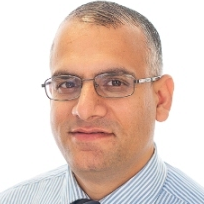Self-Repairing Composites
A special issue of Journal of Composites Science (ISSN 2504-477X).
Deadline for manuscript submissions: closed (31 December 2018) | Viewed by 4331
Special Issue Editors
2. Enhanced Composites and Structures Center, School of Aerospace, Transport and Manufacturing, Cranfield University, Cranfield MK43 0AL, UK
Interests: biorefining, chemistry, nanotechnology, biomass, and waste; biomedical engineering; composites; sensors; manufacturing of functional materials; aerospace materials; nanomaterials; renewable energy; smart materials; surface engineering; water science and engineering; additive manufacturing of polymers and composites; multifunctional polymer composites and nanocomposites: self-healing, nanoelectronic materials; hydrogels; membranes; nanofiber; composites for extreme environments and manufacturing technology
Special Issues, Collections and Topics in MDPI journals
Interests: multifunctional composites; smart materials; composite manufacturing; composite joints; computational damage mechanics; composite repair
Special Issues, Collections and Topics in MDPI journals
Special Issue Information
Dear Colleagues,
Self-repairing composite materials are a class of new emerging materials having the ability to heal/repair themselves by mimicking the self-healing functionality that is observed in many living organisms. In comparison to traditional materials, self-repairing materials display the extraordinary ability of self-repair when subjected to failure through fracture/fatigue. Self-repairing composite materials with imperative self-repairing effects are expected to result in the incorporation of a number of merits, as well as in resolving the traditional problems of polymers and their respective composite materials. In order to be considered as a self-repairing material, it must have certain properties, such as the ability to automatically repair materials; ability to repair damage to materials multiple times; ability to heal materials with defects of any size; reduced maintenance costs; exhibit better or equal performance in comparison to traditional materials and should be more economic compared to presently-used materials
This Special Issue of the Journal of Composites Science invites innovative contributions in terms of research articles, reviews, communications, and letters from around the globe. Potential topics include, but are not limited to, structure and chemistry of self-repairing composites materials; processing; properties, characterization; functionalization; and applications ranging from automotive to aerospace.
Dr. Vijay Kumar Thakur
Dr. Hamed Yazdani Nezhad
Guest Editors
Manuscript Submission Information
Manuscripts should be submitted online at www.mdpi.com by registering and logging in to this website. Once you are registered, click here to go to the submission form. Manuscripts can be submitted until the deadline. All submissions that pass pre-check are peer-reviewed. Accepted papers will be published continuously in the journal (as soon as accepted) and will be listed together on the special issue website. Research articles, review articles as well as short communications are invited. For planned papers, a title and short abstract (about 100 words) can be sent to the Editorial Office for announcement on this website.
Submitted manuscripts should not have been published previously, nor be under consideration for publication elsewhere (except conference proceedings papers). All manuscripts are thoroughly refereed through a single-blind peer-review process. A guide for authors and other relevant information for submission of manuscripts is available on the Instructions for Authors page. Journal of Composites Science is an international peer-reviewed open access monthly journal published by MDPI.
Please visit the Instructions for Authors page before submitting a manuscript. The Article Processing Charge (APC) for publication in this open access journal is 1800 CHF (Swiss Francs). Submitted papers should be well formatted and use good English. Authors may use MDPI's English editing service prior to publication or during author revisions.
Keywords
- composites
- self-repairing
- mechanical properties
- different self-repairing technologies
- characterization
- modelling of self-repairing
- monitoring of self-repairing






